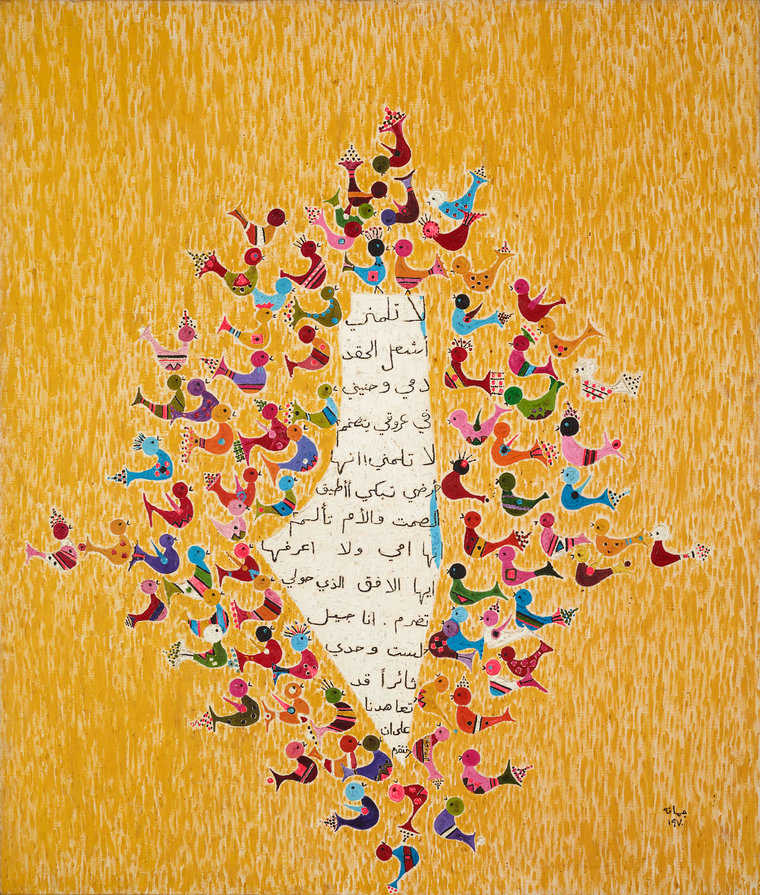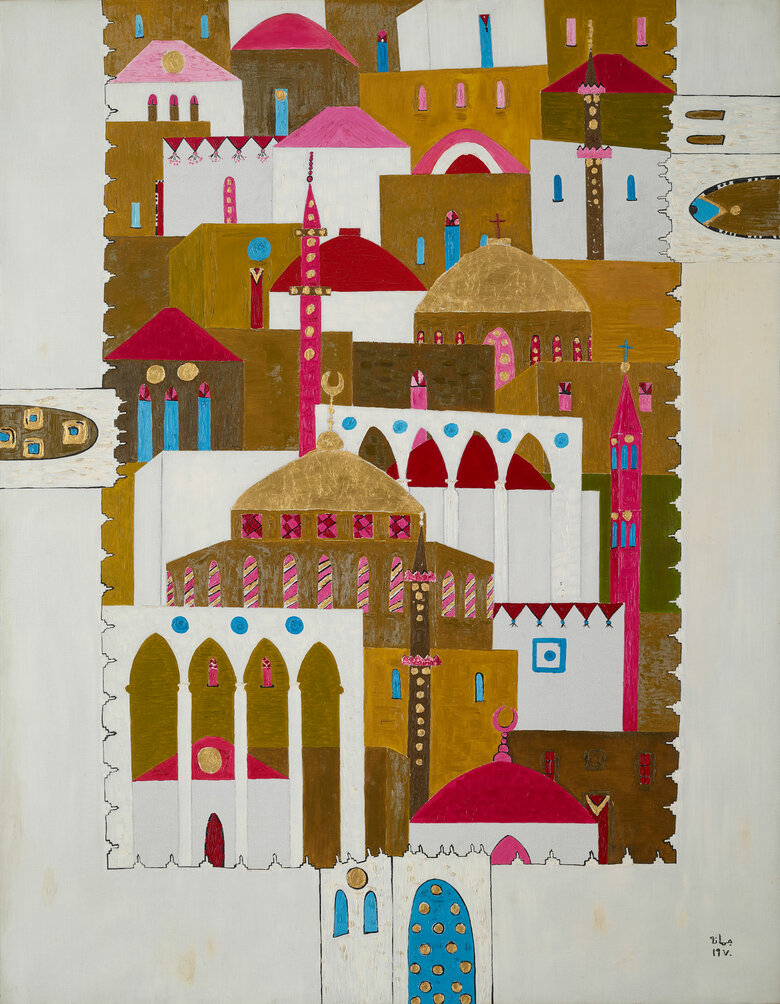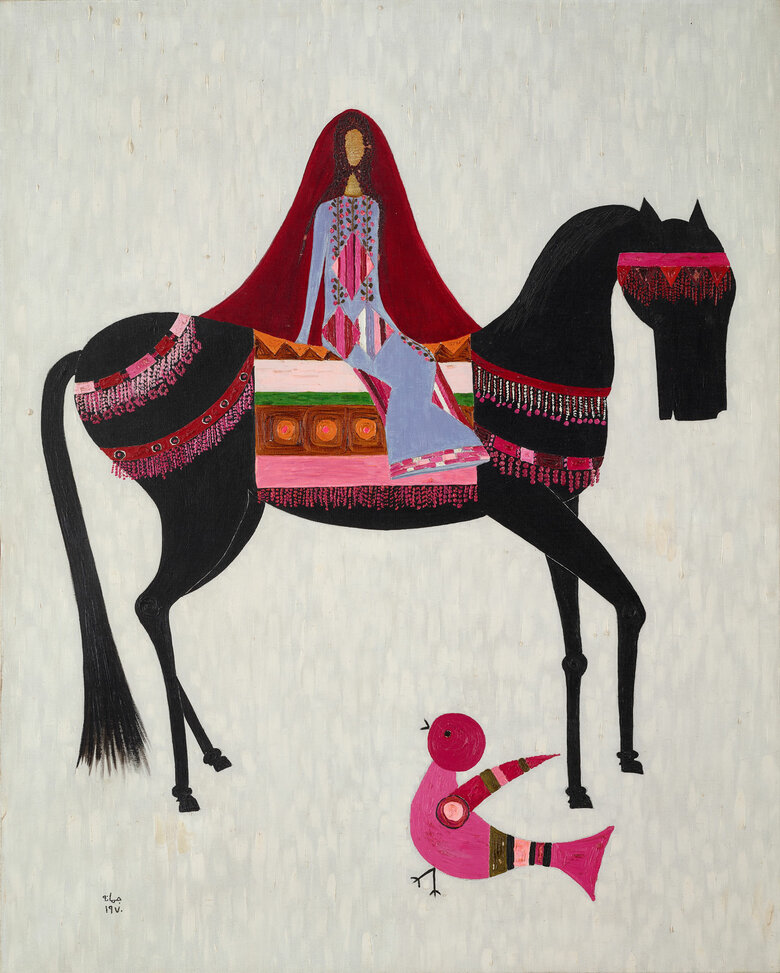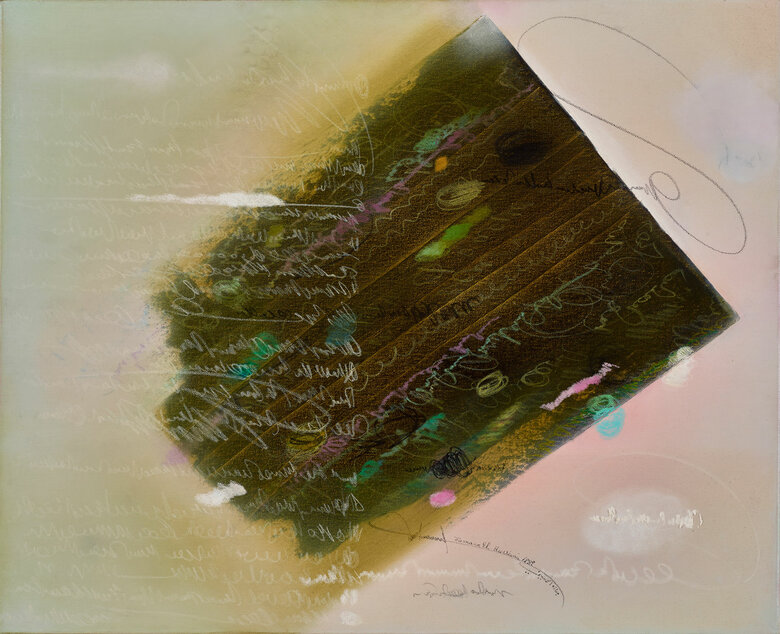Painted by Jumana El Husseini, The Spring of Palestine, 1970, shows the map of Palestine in white, against a golden yellow background. The map is filled with the words of a poem by Mahmoud Darwish, a renowned Palestinian resistance poet. Birds are surrounding the calligraphy, each bird adorned with motifs inspired by traditional Palestinian embroidery pattern.
The poem, translated from Arabic, reads:
“Don’t blame me! hatred ignites my blood,
And my nostalgia swells in my veins.
Don’t blame me if my land weeps,
Can I endure silence while the mother suffers?!
She is my mother, and I do not know her,
O horizon that surrounds me and flares up.
I am a generation not alone, a rebel,
We have pledged to advance.”
لا تلمني! أشعل الحقد دمي"
و حنيني في عروقي يتضخم
لا تلمني إنها ارضي تبكي
أأطيق الصمت و الأم تألم؟
! إنها أمي,ولا أعرفهـــا
إيها الأفق الذي حولي تضرم
أنا جيل لست وحدي ثائراً
"قد تعاهدنا على أن نتقدم
El Husseini’s use of birds reflects Darwish’s own use of the metaphor, especially in his book Broken Birds from which this poem is extracted. In his poetry, birds often symbolize the collective yearning for freedom, homeland return, and resilience in the face of adversity. The title, The Spring of Palestine, signifies hope and renewal. The birds, drawn in a deliberately simplistic and naïve style to accentuate their symbolism, densely frame the map, suggesting unity and community. They function as heralds of a future marked by peace and freedom for Palestine.
This is important because during the 1960s and 1970s, Beirut’s Palestinian artistic landscape, which El Husseini took part in, tended to either follow the PLO expressive symbolic style aimed at unifying the Palestinians behind the cause, or the more cosmopolitan world of Beirut’s art scene and its galleries. The Spring of Palestine exemplifies El Husseini’s capacity to bridge both worlds through merging the political with her unique artistic approach. This is evident in the stylistic rendering of the ‘handicraft’ birds, which highlights her approach of blurring the boundaries between artistic media, and what is considered fine art.
Signed and dated in Arabic on the lower left front and on reverse
















